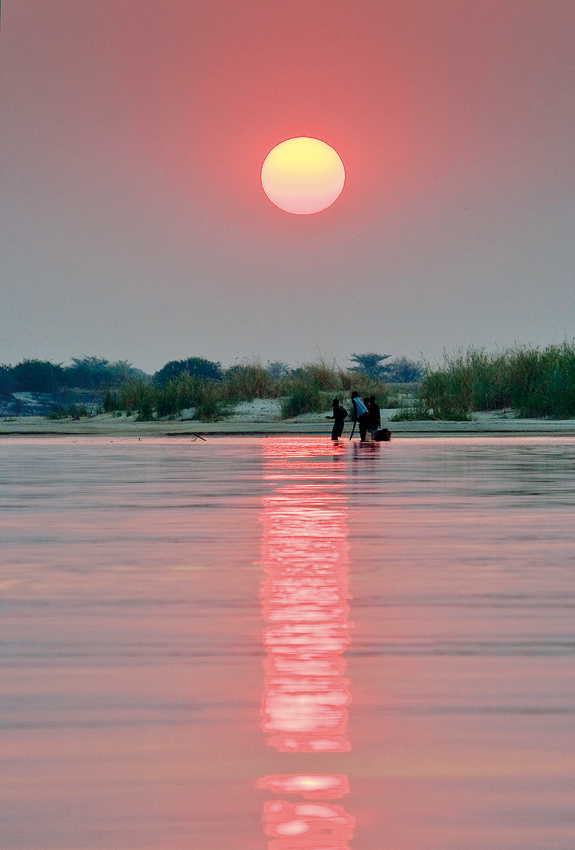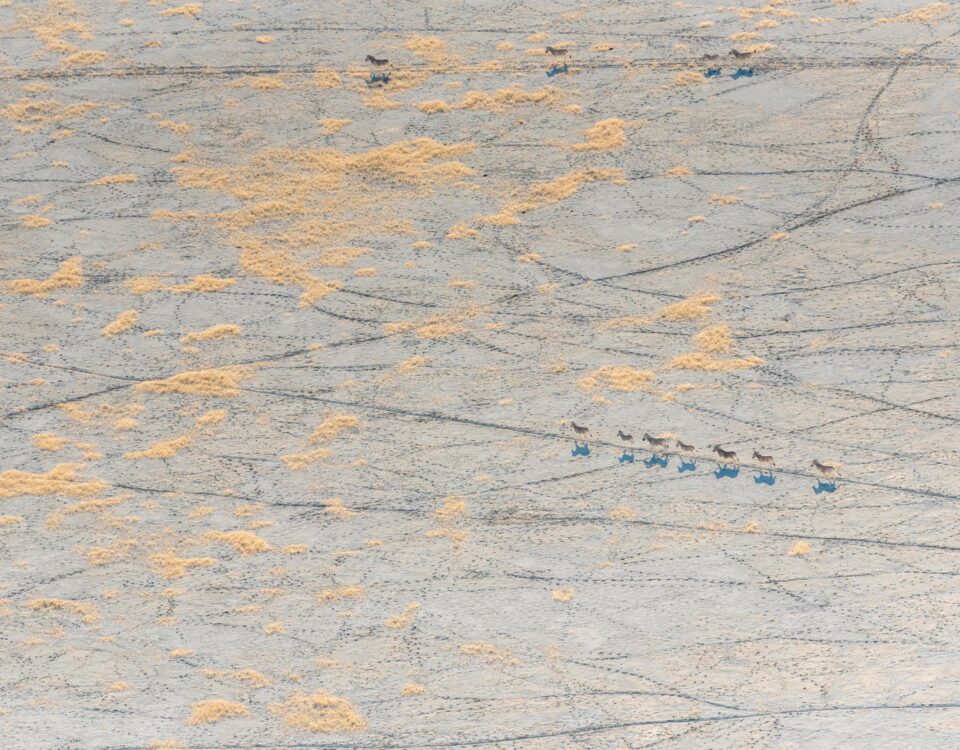
All that glitters could be gold – jewellery workshops
September 20, 2013African Wild Dog bike race ends in success
September 23, 2013Text and photographs Annabelle Venter
Here Annabelle takes a look at what awaits photographers in the Namibian springtime. Spring arrives quite suddenly if not unceremoniously around the beginning of September, but don’t expect a colourful flower show. There are, nonetheless, two aspects that stand out for the photographer at this time of year. Smoke-filled skies that make for dramatic sunsets, and the delicate budding of acacia trees along the roadsides, both telling you that you are definitely in Africa and that winter is over!
Spring is still an excellent time for wildlife photography, because it’s very dry and the first rains are expected only in October, but now the countryside is subtly starting to bloom and show a gentler side. It’s also time to capture those blood-red sunsets and silhouettes. Every selection of holiday photos includes a sunset or two, and there is no better place than Namibia to make the best of this evergreen topic.
Closing in on flowering trees
Not all close-up photography falls into the macro category. You can do close-up shots with a telephoto lens, a dedicated macro lens, or even with an extension tube and standard 50-mm lens. Most point-and-shoot cameras have good macro capabilities, with the setting indicated by the little flower icon.
However, since the flowers that show themselves in spring are usually high up in the trees, a medium telephoto will secure those shots for the time being. We’ll look at macro photography in greater detail in the summer issue of Travel News Namibia.
If using a telephoto lens to capture your high flower shots, then look out for:
- A clean background (no definite branches or power lines).
- Aim for less rather than more flowers in the frame.
- See if there’s an interesting subject you can photograph with the flowers, like a bird or some buzzing bees.
- The best time to take this type of shot is early in the morning when there is less wind to disturb the dainty flowers. If you have a tripod at hand, use it!
- A small depth of field (f5.6 or less) will help blur out a disturbing background.
Catching the light – awesome spring sunsets
For me, spring in Namibia signifies the most amazing sunsets. The air is often thick with dust, and especially with smoke. The veld fires that break out in north-eastern Namibia and Botswana at this time of year have one upside – they provide dramatic, colour-saturated sunsets.
Here are a few tips for making the most of sunrise and sunset opportunities:
- Choose your spot the previous day if possible – rivers create interesting topics.
- Check when it will be sunrise and when sunset.
- Look for an interesting foreground to add impact to the image.
- Use a telephoto lens upwards of 200 mm. This will help enlarge the sun. If you want a landscape scene through a wide-angle lens, then the sun will become smaller.
- Experiment! There is no perfect setting here, so to get going, set your camera to Shutter Priority and then shoot on different shutter speeds, starting with the fastest, working down to the slowest.
- Try underexposing your images – it will make the colours richer.
- Shoot in RAW if you can – this way you’ll be able to retrieve all the details of the colours when you process. Shooting in JPEG robs you of that choice.
- Look out for homeward-bound birds at sunset – especially on the rivers up in the north-east. One or two flying past the setting sun will turn a good shot into a great one!
The shape of things – making the most of a silhouette
Here are a few more tips for sunset shots while focussing on a silhouette in the foreground:
- Use a tripod or beanbag support for sharpness. This is important for all sunset shots, but becomes even more so when you have a definite silhouette in the foreground.
- A telephotos lens used here will reduce the depth of field and blur the background, and the subject will stand out more.
- Clouds can create dramatic layers.
- Choose a subject with a striking and clearly defined shape. If you’re shooting people, make sure they are separate from each other, to avoid them becoming a dark, indistinguishable mass.
- You’ll want a fast shutter speed to achieve a sharp image, so you could increase the ISO to 400 or more.
- Try setting your camera to manual mode, and meter off the sky (by pushing the shutter button only half way down). Adjust the shutter speed and aperture to set the slider in the middle at 0 when you look through the viewfinder. Then re-compose your shot, focus and shoot.
- Remember the two-thirds rule and position the sun off-centre.
More tips to make the best of your gear when travelling
- Dust it – the dust is at its peak at this time of year and a simple dust blower (see photo) is a lightweight and essential piece of equipment for a quick clean. Dust collects where the lens and body meet, so it’s vital to blow that area free of dust before changing lenses. But take care; never aim the dust blower at the sensor.
- Change it – when changing your lenses, find a relatively dust-free space like a bathroom and do the dust-blowing procedure first. Close the windows, reduce activity in the room and switch off the fan. Don’t forget to switch off your camera first, and be quick! Never change lenses in the car when the air-conditioning or a fan is blowing straight at you.
- Store it – store your full memory cards separately from your camera. If you’ve captured that once-in-a-lifetime shot, it’ll be as precious as your passport. So don’t leave it in the camera bag, in case the bag’s stolen. I often put mine in a card holder, which I slip into side knee-pockets of my pants.
- Hide it – never leave your camera bag visible in an unattended vehicle. And don’t put it in the boot in full view of the public – rather carry it with you. That’s why you should pack lightly!
- Insure it – for peace of mind, it’s always a good idea to take out travel insurance on your camera gear.
- Separate it – it’s also a wise option to use several smaller memory cards rather than just one big one. If the big one becomes corrupted or mislaid, you’ll lose everything you’ve done on the trip thus far.
- Plug it – bring a wall adaptor suitable for Namibian wall sockets.
A WORD OF CAUTION
Never look directly at the sun through a telephoto lens, as you could damage the retina in your eye. The intensity of the sun is magnified through the lens.
FOR MORE PHOTOGRAPHY TIPS – READ HERE
This article was originally published in the 2013 Travel News Namibia Spring print edition.





